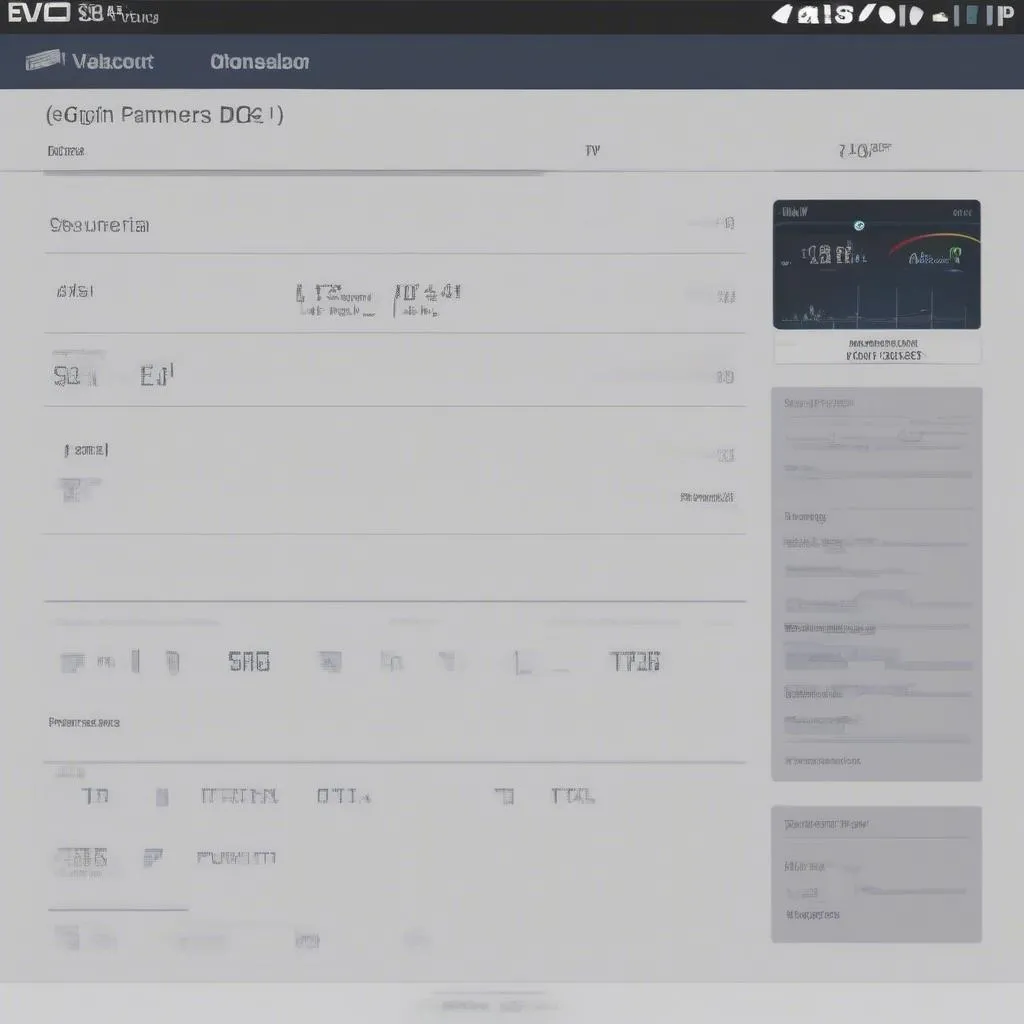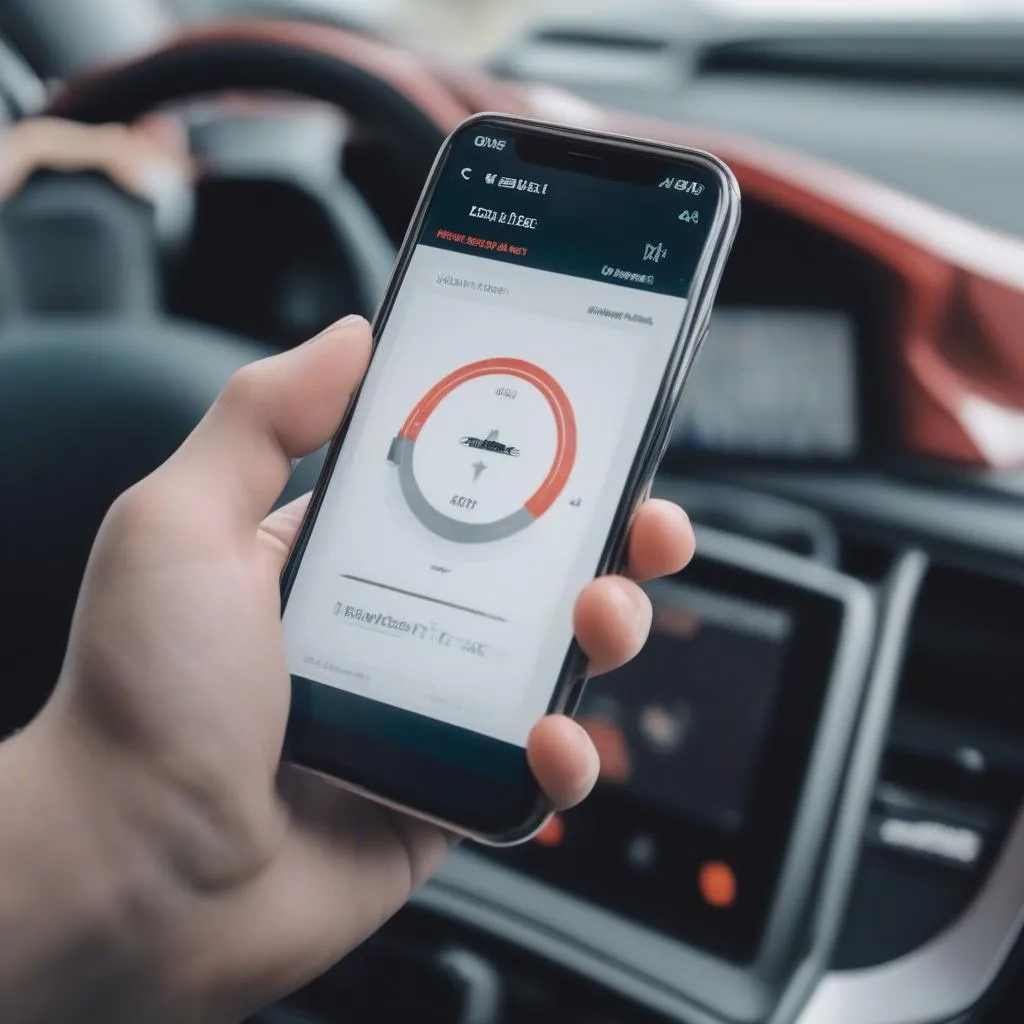Have you ever wondered what’s going on under the hood of your car? Or maybe you’ve been experiencing strange symptoms and want to diagnose the problem yourself. If so, you’re not alone. Many car owners are turning to OBD II scan tools to get a better understanding of their vehicle’s health. But while most scan tools can display basic codes and fault information, some can also read live data, which provides a real-time snapshot of your car’s vital signs.
Understanding Live Data
Live data is information that your car’s onboard computer sends to your OBD II scan tool in real time. This data can include everything from engine speed and temperature to fuel pressure and air flow. By analyzing this data, you can gain valuable insights into the performance of your engine, transmission, and other systems.
Why Is Live Data Important?
Reading live data can be helpful for a variety of reasons, including:
- Diagnosing Problems: Live data can help you identify problems that aren’t always reflected in trouble codes. For example, you might notice a sudden drop in fuel pressure, indicating a possible leak.
- Monitoring Performance: Live data can help you monitor the performance of your car’s systems over time. You can see how your fuel economy is affected by driving habits, or if your engine is running hotter than usual.
- Tuning Adjustments: For car enthusiasts, live data is essential for tuning and tweaking their engine’s performance. They can see how different adjustments affect various parameters, such as air-fuel ratios and ignition timing.
How to Read Live Data
Reading live data from an OBD II scan tool is relatively simple. Most scan tools come with a screen that displays the data in real-time. Here’s a step-by-step guide:
- Connect the Scan Tool: Connect the OBD II scan tool to your car’s diagnostic port, typically located under the dashboard.
- Select Live Data: Navigate to the “Live Data” or “Data Stream” menu on your scan tool.
- Choose Parameters: Select the specific parameters you want to monitor. Most scan tools offer a wide range of options, from basic parameters like engine speed and coolant temperature to more advanced ones like fuel trim and oxygen sensor readings.
- Analyze the Data: Observe the data displayed on the screen. Look for any unusual readings, such as a sudden drop in engine speed or a spike in coolant temperature.
Pro Tip: To make the most of live data, it’s helpful to consult a repair manual or online resources to understand the normal ranges for each parameter.
Common Live Data Parameters
Engine:
- RPM (Revolutions Per Minute): Indicates the engine’s rotational speed.
- Engine Load: Represents the amount of load being placed on the engine.
- Throttle Position: Indicates the position of the throttle valve.
- Coolant Temperature: Shows the temperature of the engine coolant.
- Air Temperature: Displays the temperature of the air entering the engine.
- Fuel Pressure: Indicates the pressure of fuel in the fuel lines.
- Airflow: Measures the amount of air entering the engine.
- Fuel Trim: Shows how the engine control unit (ECU) is adjusting fuel delivery to maintain the proper air-fuel mixture.
- Oxygen Sensor Readings: Indicates the oxygen content in the exhaust, which is used to monitor engine efficiency.
- Ignition Timing: Displays the timing of the spark plugs.
Transmission:
- Transmission Fluid Temperature: Shows the temperature of the transmission fluid.
- Transmission Slip: Indicates if the transmission is slipping.
Other:
- Vehicle Speed: Indicates the car’s speed.
- Battery Voltage: Shows the voltage of the battery.
- Steering Wheel Angle: Displays the angle of the steering wheel.
Frequently Asked Questions
Q: What OBD II scan tool do I need to read live data?
A: Not all OBD II scan tools can read live data. Some basic scan tools only display trouble codes. For live data, you’ll need a scan tool that specifically offers that functionality. Look for scan tools that are labeled as “advanced” or “professional.”
Q: Can I read live data without a scan tool?
A: You can use a smartphone app with an OBD II Bluetooth adapter to read live data. However, these apps are not as comprehensive as dedicated scan tools and may not offer all the desired data parameters.
Q: What are the dangers of reading live data?
A: Reading live data is generally safe, but it’s important to use a reliable scan tool from a reputable manufacturer. Avoid using scan tools that haven’t been properly tested or validated.
Q: How can I learn more about interpreting live data?
A: There are many resources available online and in libraries that can help you understand live data parameters and their meaning. You can also find specialized forums and communities dedicated to OBD II diagnostics.
Q: What are some good OBD II scan tools for reading live data?
A: There are many different scan tools available, but some popular options include the Autel MaxiCOM MK808 and the Launch X431 Pro. These scan tools offer a wide range of features, including live data, trouble code reading, and advanced diagnostics.
Q: Is reading live data legal?
A: Yes, reading live data from your own vehicle is legal. However, it’s important to note that accessing or modifying data on another person’s vehicle without their permission may be illegal.
Q: Can I use live data to improve fuel economy?
A: Yes, understanding live data parameters like fuel trim and air-fuel ratios can help you identify areas where you can improve fuel efficiency. For example, if you notice that your fuel trim is consistently high, it could indicate a problem with your air intake system.
Q: Can I use live data to find out why my check engine light is on?
A: While live data can help pinpoint the source of a problem, it’s important to consult a qualified mechanic for professional diagnosis and repair.
Conclusion
Reading live data from your car’s OBD II port can be a valuable tool for both car owners and enthusiasts. By understanding the information displayed on your scan tool, you can gain valuable insights into your car’s health and performance. Whether you’re trying to diagnose a problem or simply want to monitor your car’s vital signs, live data can provide a wealth of information.
If you’re looking for further assistance with OBD II scan tools or need help interpreting live data, don’t hesitate to contact us. We have a team of experts available 24/7 to assist you with any questions or concerns. You can reach us via WhatsApp at +84767531508.
 OBD II scan tool reading live data
OBD II scan tool reading live data
 OBD II scan tool parameters
OBD II scan tool parameters
 OBD II scan tool app
OBD II scan tool app


